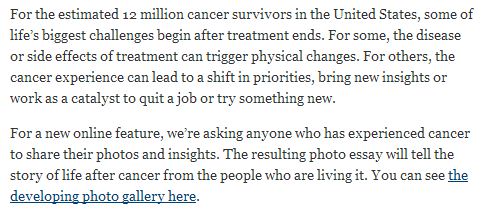“We found that people who ate nuts every day lived longer, healthier lives than people who didn’t eat nuts.” Wow – that’s a real reason to increase our daily nut intake.
Harvard University has been holding two long-running research studies on the health benefits of eating nuts – showing that “daily nut-eaters were less likely to die of cancer, heart disease, and respiratory disease.” Dr. Frank Hu (quoted above) co-authored the study report that was published in the New England Journal of Medicine. Dr. Hu is a professor of nutrition and epidemiology at the Harvard School of Public Health.
Each nut has its own health properties – and like anything else, nuts are best eaten in moderation. A BBC blog post shares the health benefits of different nuts. Here are a few examples. Visit the BBC’s blog to read about more nuts, like pistachios, cashews, and brazil nuts.
Almonds
If you avoid dairy, calcium-rich almonds are a good choice to ensure you’re getting enough of this bone-building mineral. Almonds are also high in vitamin E, a nutrient which helps to improve the condition and appearance of your skin. For some extra heart help, swap flaked almonds for the whole nut – with the skin intact – because the almond’s skin is full of heart-protecting compounds called flavonoids.
Walnuts
Their superior antioxidant content means walnuts are useful in the fight against cancer. They’re also a good source of mono-unsaturated, heart-friendly fats, and studies show they help to lower the bad form of cholesterol (LDL). Finally, they’re rich in omega-3, so they’re a great alternative if you don’t eat oily fish.
And here are some recipes to try out – put those nuts to good use! Enjoy.
Ingredients
1/3 cup whole unsalted almonds
2/3 cup bite-size multibran or whole-grain cereal squares
1/2 cup low-fat granola cereal without raisins
1/4 cup dried apricot halves, cut into strips, or golden raisins
1/4 cup sweetened dried cranberries
Preparation
- Preheat the oven to 350°F. Spread the almonds in a single layer on an ungreased baking sheet.
- Bake for 5 to 10 minutes, or until lightly toasted, stirring once or twice to ensure even baking. Transfer to a plate to cool completely.
- Meanwhile, in a large bowl, stir together the remaining ingredients. Stir in the cooled almonds.
- Cook’s Tip: If all the snack mix isn’t likely to be eaten on the day you make it, we recommend using the golden raisins. The moisture of the apricots may cause the cereal to lose its crispness over time. Be sure the almonds are completely cooled when you add them to the mix; otherwise, they will make it soggy.
Makes about 6 cups
Ingredients
4 cups rolled oats
1 cup walnut pieces
2 teaspoon cinnamon
1/2 teaspoon ground cloves
3 tablespoon ground flax
3 packets stevia (or to taste)
1/4 cup coconut oil
1 1/2 cups mashed banana
2 teaspoon vanilla extract
1 cup dried cranberries
Preparation
- Preheat oven to 350F.
- Mix together the first six ingredients in a large bowl and set aside.
- In a small saucepan, melt the coconut oil. Add all remaining ingredients except for the dried cranberries and stir occasionally over low heat for about two minutes.
- Pour the wet mixture over the ingredients in the dry bowl and stir to combine, trying to coat as many of the oats as possible. Taste and add a little bit more stevia and/or cinnamon to sweeten if desired. (Note: if you’re not a fan of stevia, feel free to use brown sugar or agave instead.)
- Line a large baking sheet with parchment paper and pour the oat mixture onto the pan, spreading into an even layer. (The thinner the layer, the faster it will cook.)
- Bake for 30 minutes, then remove from the oven and use a spatula to flip the pieces over, breaking them into smaller clusters.
- Bake for 20 minutes more, remove from the oven, and let cool.The clusters should firm up and become crunchy.
- Transfer the granola back to a bowl and stir in the dried cranberries.
- Store in air-tight containers for up to 4 weeks.






